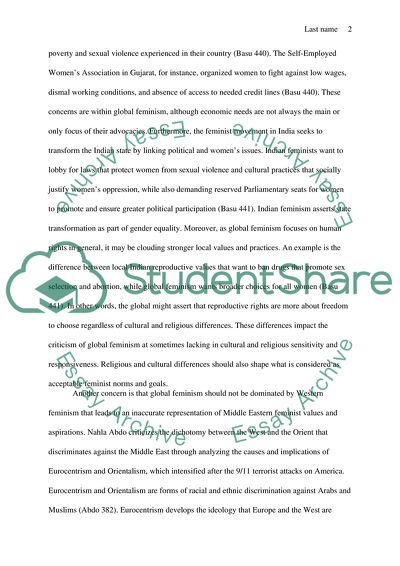Cite this document
(Global, not Western, Feminism: Localizing Global Feminist Values and Essay Example | Topics and Well Written Essays - 1750 words, n.d.)
Global, not Western, Feminism: Localizing Global Feminist Values and Essay Example | Topics and Well Written Essays - 1750 words. https://studentshare.org/gender-sexual-studies/1814365-answering-the-questions-and-write-an-analytical-paper-base-on-the-readings
Global, not Western, Feminism: Localizing Global Feminist Values and Essay Example | Topics and Well Written Essays - 1750 words. https://studentshare.org/gender-sexual-studies/1814365-answering-the-questions-and-write-an-analytical-paper-base-on-the-readings
(Global, Not Western, Feminism: Localizing Global Feminist Values and Essay Example | Topics and Well Written Essays - 1750 Words)
Global, Not Western, Feminism: Localizing Global Feminist Values and Essay Example | Topics and Well Written Essays - 1750 Words. https://studentshare.org/gender-sexual-studies/1814365-answering-the-questions-and-write-an-analytical-paper-base-on-the-readings.
Global, Not Western, Feminism: Localizing Global Feminist Values and Essay Example | Topics and Well Written Essays - 1750 Words. https://studentshare.org/gender-sexual-studies/1814365-answering-the-questions-and-write-an-analytical-paper-base-on-the-readings.
“Global, Not Western, Feminism: Localizing Global Feminist Values and Essay Example | Topics and Well Written Essays - 1750 Words”. https://studentshare.org/gender-sexual-studies/1814365-answering-the-questions-and-write-an-analytical-paper-base-on-the-readings.


